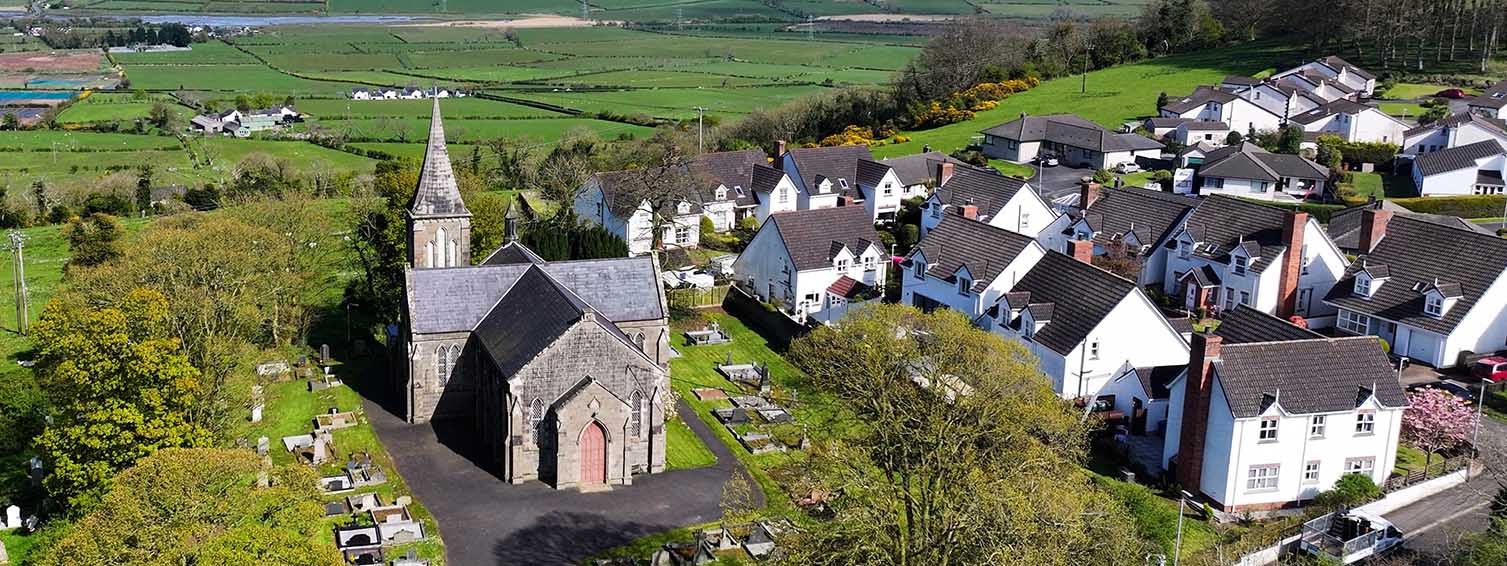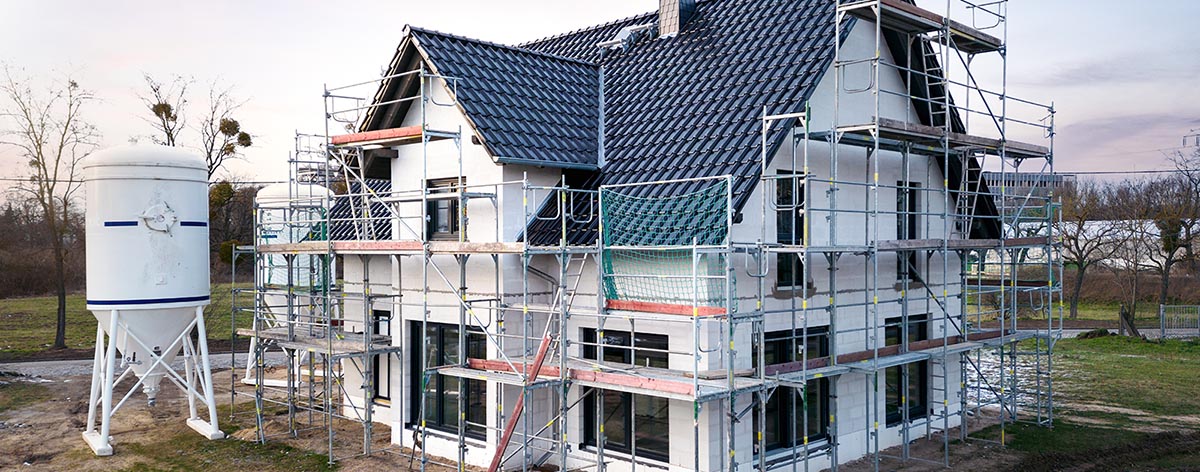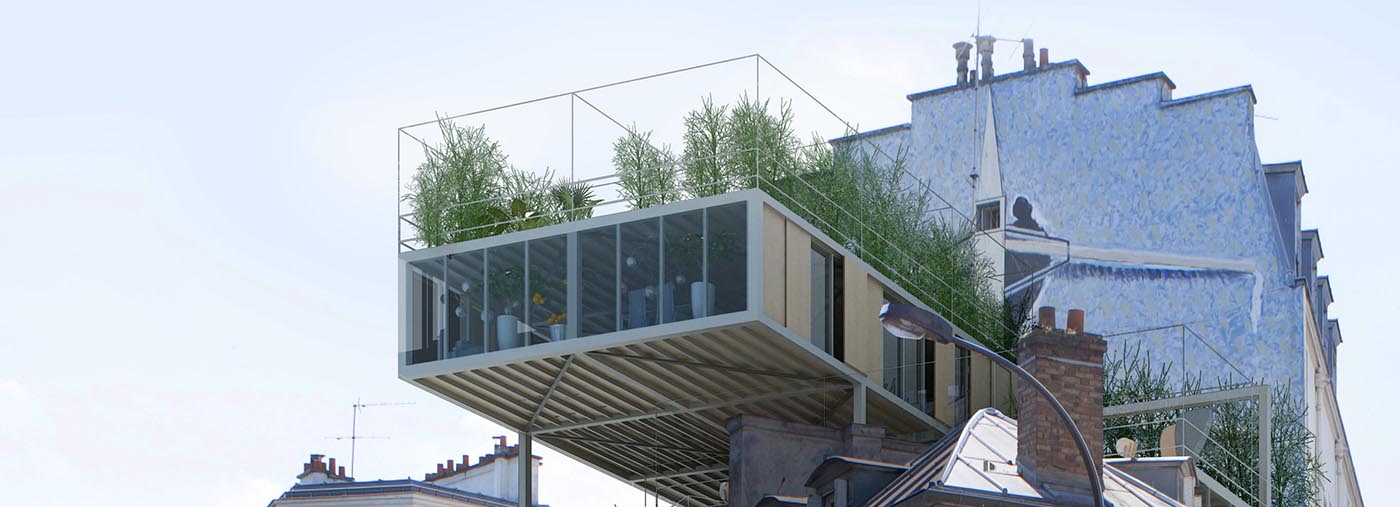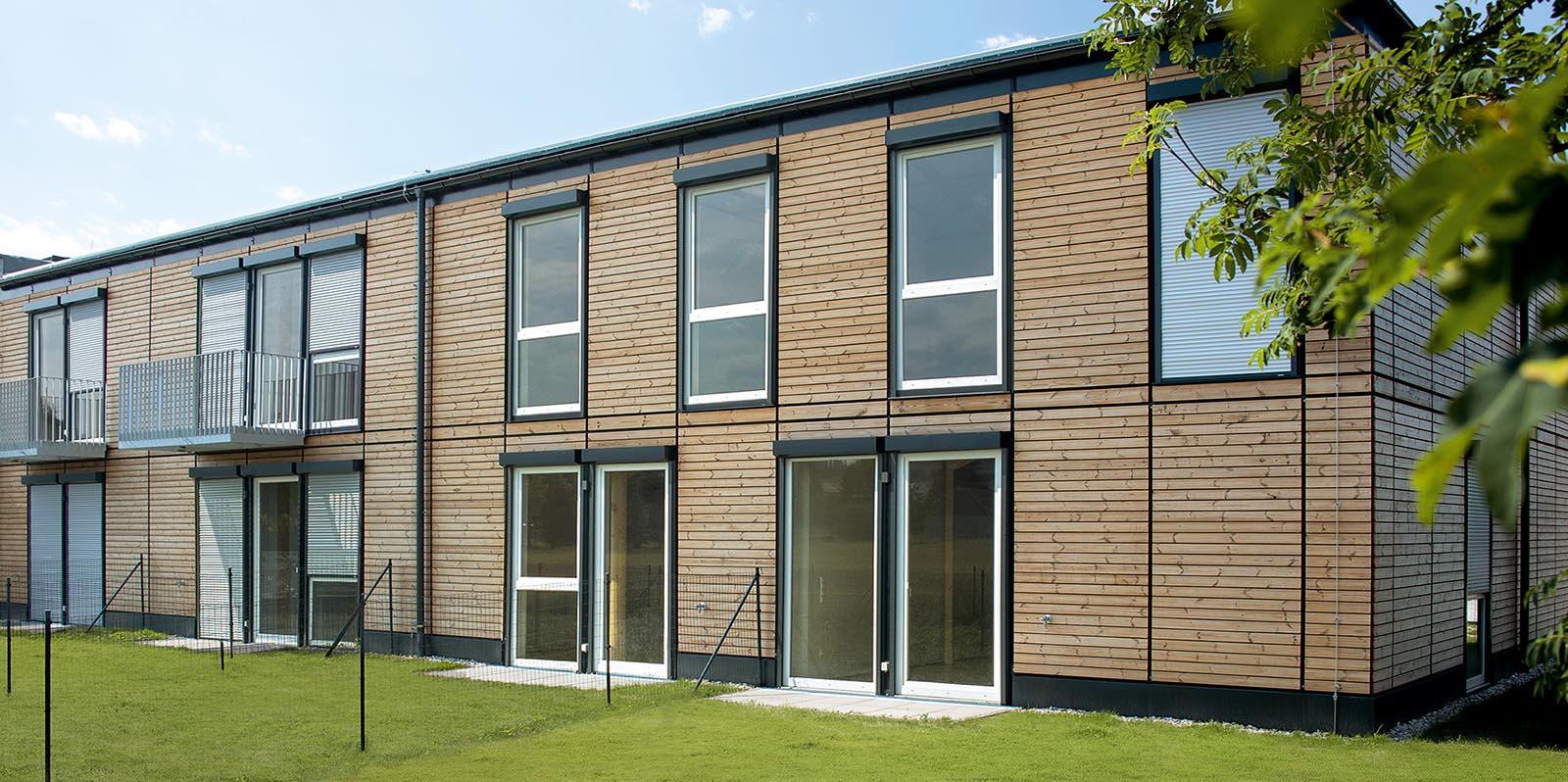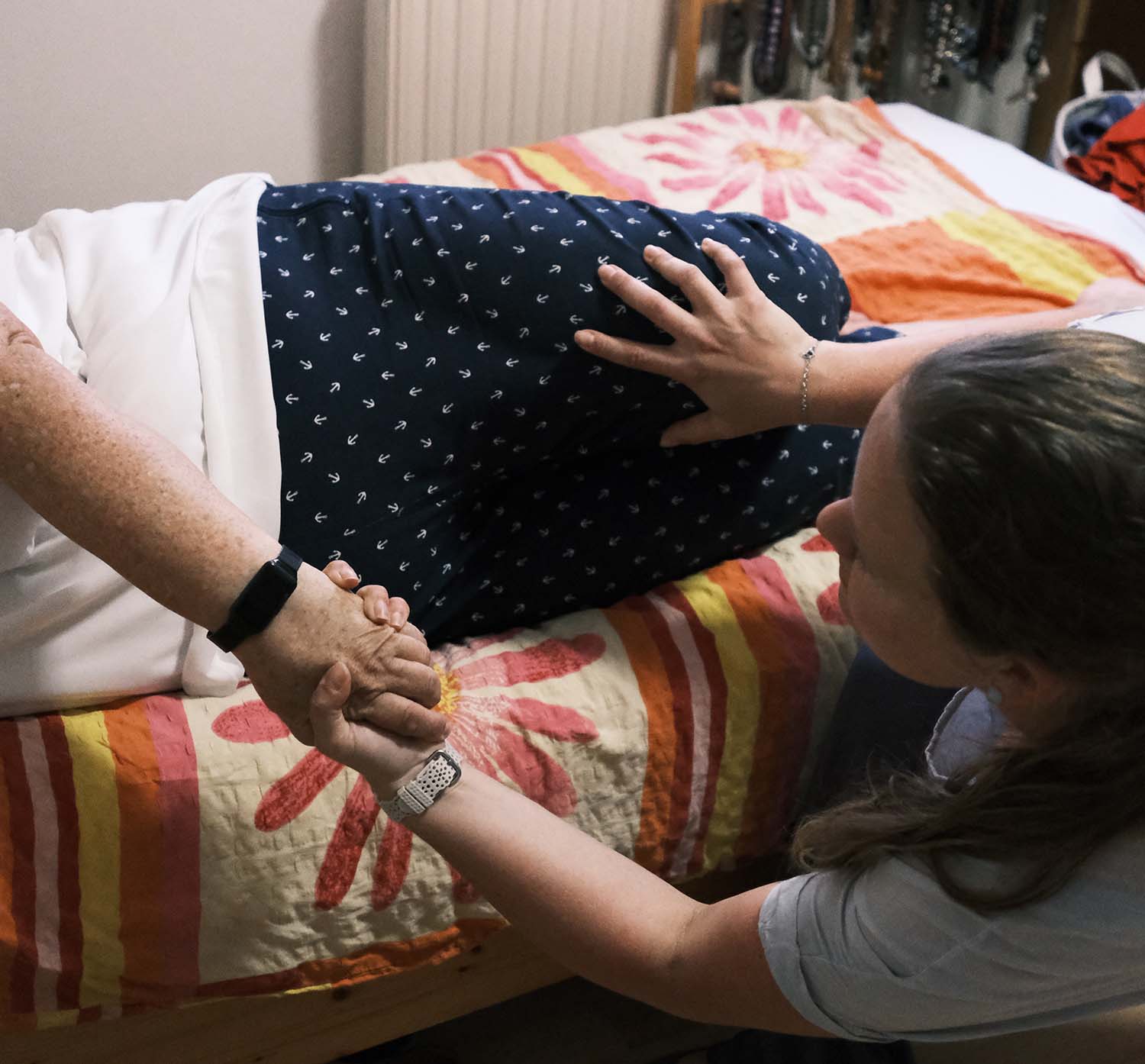The phase-out of fossil fuels and the shift towards sustainable alternatives can be observed globally – and is being implemented locally. In the past, energy production was often planned and implemented on a large scale by a few operators, but this is now changing: the energy transition means decentralization and much more local energy production. At the same time, the issues of energy security and affordable energy are becoming increasingly important for families and companies alike in the face of volatile markets, rising costs, declining competitiveness and generally high living costs.
There is also legal pressure – in Germany, for example: under the Heat Planning Act, large municipalities need a heating plan by mid-2026, smaller ones by mid-2028. This should not only record who consumes heat and where, but also where this heat should come from the most sustainable sources possible.
In this context, orientation is needed: which technologies are available and which should a village or region rely on? The short study “Heat transition in the village” by Scientists for Future analyzed the market for alternative heat sources and highlights the limits and myths of alternative heating systems. At the same time, it questions how the heating transition can be made affordable.
Interview: Dr. Jens Clausen from Scientists for Future, lead author of the study.
Get active – but how?
To date, heat has often been associated with combustion – we burn wood, coal, gas and oil. In terms of a sustainable solution, the focus is now on further development in the direction of combustion-free and low-combustion heat, as Dr. Clausen explains. Heat can be extracted from rivers and soils, solar heat can be collected. It is difficult for decision-makers to get their bearings: “Local authorities are being forced to draw up heating plans, and natural gas supplies will be phased out from around 2040. From 2027, when CO2 trading also becomes market-driven for fuels, they will become expensive,” explains Dr. Clausen. Action is important – but how to make a decision?
Due to the constant development of technologies and the transformation from a fossil to a renewable energy system, it does not make sense to rely on old experiences. It is not so easy to keep track of the evolving options on the market and choose the right technology. “We received several requests from villages asking for advice. That was the motivation for us to write down what is possible,” says the researcher, explaining the reason for this short summary study.
At the same time as the legal pressure, lobbying from sectors and trade associations is increasing, as Dr. Clausen confirms: “Around 200 bioenergy villages have been established in Germany over the last 25 years. And there are players from agriculture and the timber industry who are lobbying for bioenergy villages.” However, biogas is expensive and highly subsidized, if it exists at all. It requires intensive farming and, compared to photovoltaics, a maize field produces very little energy. In other words: PV produces 40 times more energy on the same area than corn, for example. Biogas is therefore highly inefficient: “We save an enormous amount of land if we go the electric route.”
This is also confirmed by a recent Fraunhofer study on the so-called electricity production costs. The Fraunhofer Institute for Solar Energy Systems (ISE) has been calculating the generation costs per kilowatt hour of electricity for Germany at regular intervals since 2010 and is also examining the costs for agrivoltaics for the first time. According to the study, ground-mounted PV systems and onshore wind turbines look the best with costs of 4.1 to 9.2 cents per kilowatt hour. The production costs for biogas are between 20.2 and 32.5 cents and for solid biomass between 11.5 and 23.5 cents per kilowatt hour. Dr. Christoph Kost, Head of Department for Energy System Analysis at Fraunhofer ISE: “These calculations show that the large-scale projects currently being launched in Germany with a combination of ground-mounted PV systems, wind farms and stationary battery storage systems are good investments.”
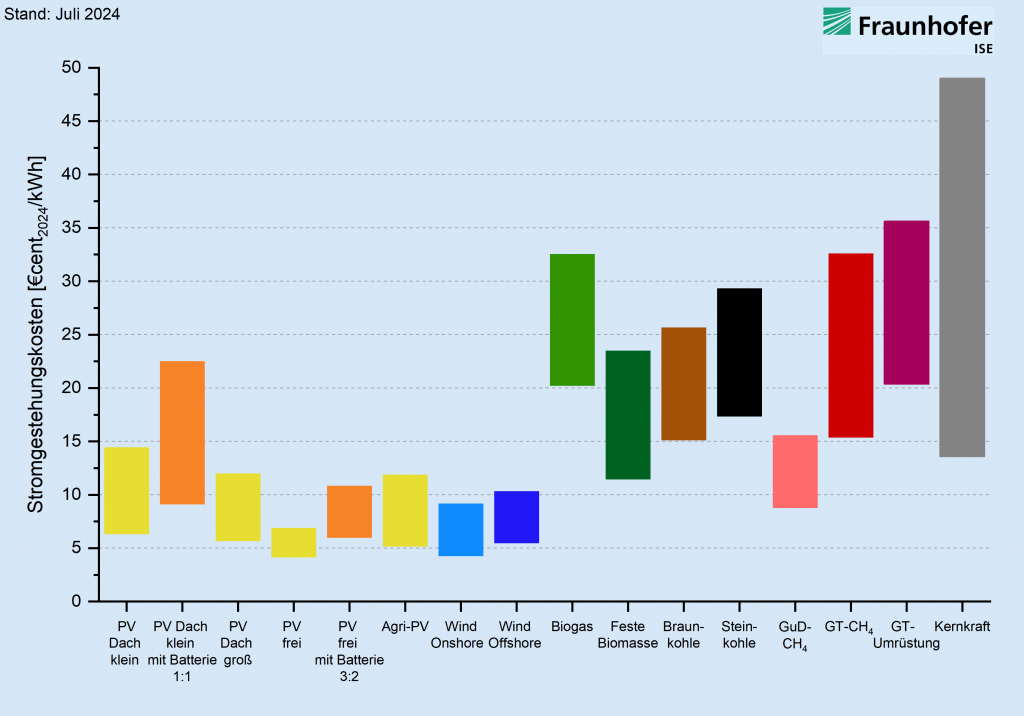
The challenge of the dark doldrums
One major challenge remains: the peak load. In summer, the load and sales for the heating networks are very low because the heating systems remain cold. Hot water is needed for citizens, and if available, only energy and heat-intensive companies are customers. But then, from November to March, there are days in winter when it is very cold and a village consumes not one megawatt, but perhaps two megawatts of heating power. If, for example, a large heat pump is designed for a village with an outside temperature of up to around 0 degrees Celsius, then, according to Clausen, another solution is needed for colder days. One that provides additional power over and above that of the heat pump.
The alternatives? The academic answer: it depends. Hydrogen will be very expensive and probably hardly available. If there are already biogas plants in the region, biogas makes sense if it can be stored in large quantities. In densely wooded areas, the logical peak load is wood. The disadvantage of wood, according to Clausen: “The forest is already heavily thinned out in many places in Germany due to climate-related forest dieback.” The fluctuating market prices, which tend to rise with increasing consumption and scarce availability, must also be taken into account.
It also makes sense to coordinate several villages, a region, and share the costs of designing and planning a new heating solution – instead of building a separate solution for each village. “In the region, similarities in building culture are likely, and the heat potential along rivers or in large forest areas is also similar,” explains Clausen. Politics is an important player, driver or sometimes even a brake on these projects.
Quality in consulting: Growing with the market
This raises the question of consulting in these projects. “When the debate on the Heat Planning Act started, there were suddenly a lot of companies in Germany offering and developing heat plans,” says Clausen. The consulting structures developed around the expected heat transition business. This raises the question of the quality of this advice with regard to implementation: “District and local heating concepts for small villages are still in the innovation phase.” Advice and quality are therefore evolving with the heating transition. And: “Those who offer poor quality will fall out of the market again.”
That leaves the appliance manufacturers: there is a lack of sufficient production structures for many solutions. If demand for large heat pumps increases, manufacturers will also have to ramp up their production – and that takes time. However, the energy transition is also an opportunity for companies to expand the value chain. According to Clausen, other sectors are also benefiting from this: “Companies like Viessmann are now acting as general contractors. They take on the entire project for laying the heating network. The villages then don’t have to negotiate with many companies, but only have one point of contact.”
What makes local projects successful
The villages are breaking new ground with these projects. So what makes these projects successful? Basically, according to Clausen, solutions have to be worked out for four areas: For the technical solution, the permits, customer acquisition and a sponsor for the future heating network must be found or even founded. He warns: “Solutions are needed for all four areas, otherwise no heat will come out of the pipeline.” And there are several target groups to convince in these four areas: “I can’t just start building, I need permits. And when I tell the authorities that I’m taking heat from the river, they’ll look at me questioningly. They often haven’t heard of this before. It’s particularly pleasing when the approval authorities cooperate and work with the applicants to find out how it could work,” says the researcher.
The next step is to find people who will take care of this and involve citizens in the project: Because it is also important to find customers for the project. Clausen: “It is best if 70-80% of the citizens in the towns are convinced of the solution and connect to the grid. Then the grid construction is also worthwhile.”
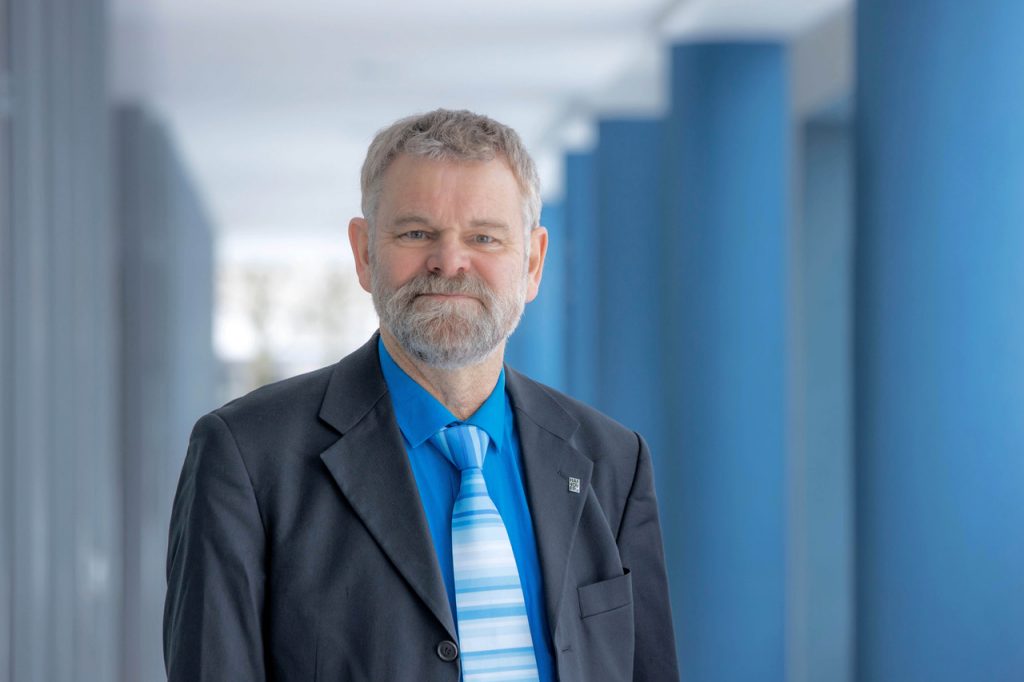
About Dr. Jens Clausen
Dr. Jens Clausen is a co-founder of the Borderstep Institute and a board member of the association Scientists for Future e.V. The graduate mechanical engineer heads the Borderstep office in Hanover as a senior researcher. His work focuses on start-up, innovation and transformation research. He is particularly interested in the topics of heat, electromobility and digitalization.
Dr. Michael Huber, Helge Ehrhardt and Prof. Dr. Ulrike Jordan also contributed as authors.
You can find out more about our interview partner Dr. Jens Clausen here
To the short study “Heat transition in the village”
The short study provides a comprehensive analysis of new approaches to achieving the transition from purely fossil-based heating to sustainable, innovative solutions in villages. It goes into the various options in great detail and also addresses myths. For example, it explains why biogas and wood heating as the only source of heat hardly make sense today.
The heating transition requires a multi-layered approach that harmonizes technological innovation, infrastructure development and municipal commitment. In addition to environmentally friendly design, energy security, reliability and affordability must also be taken into account.
Examples from the analysis:
- Green gases: Biogas, biomethane and hydrogen as alternatives to natural gas can use the existing gas infrastructure, but pose a challenge in terms of production and scalability. For example, large agricultural areas are required for the production of biogas, while PV systems are 40 times more efficient in comparison.
- Heating with wood: Wood and its derivatives (pellets, wood chips) are traditional renewable heat sources. However, the sustainability of wood heating on a large scale is questionable due to increasing demand and the dwindling state of forests. Wood heating should be limited to regions with abundant forest resources – and it should not be relied upon too heavily as it could lead to shortages and volatile prices that tend to rise.
- Heat pumps, especially in combination with renewable electricity sources, are a practical and efficient method of heating buildings. Flow water and air source heat pumps significantly reduce dependence on fossil fuels and their effectiveness increases with the energy efficiency of the buildings they supply. An entire chapter is devoted to building renovations and insulation.
- Warm vs. cold district heating networks: The analysis distinguishes between warm (medium temperature) and cold (low temperature) district heating networks. Warm networks are more suitable for existing buildings and can use various heat sources, including solar thermal energy and biomass. Cold networks, which operate at lower temperatures, are efficient for new buildings.
- Successful conversion projects often rely on community participation and local economic benefits. Energy cooperatives and local utilities can play an important role in financing and managing sustainable heat projects. For the long-term success of these initiatives, it is crucial that broad social acceptance is ensured and that economic concerns are taken into account.
You can find more about the analysis here: https://de.scientists4future.org/waermewende-auf-dem-dorf/
You can find out more about the Fraunhofer study on electricity generation costs here.
Author: Anja Herberth
Chefredakteurin


